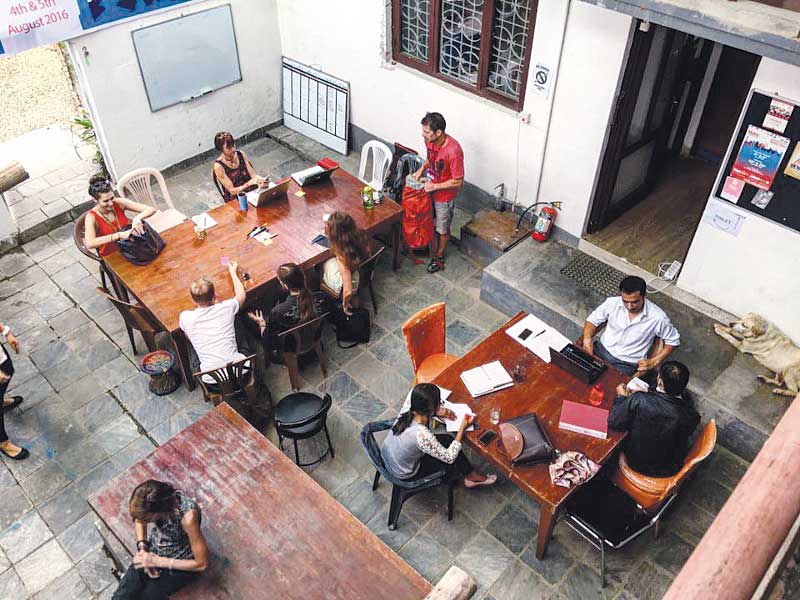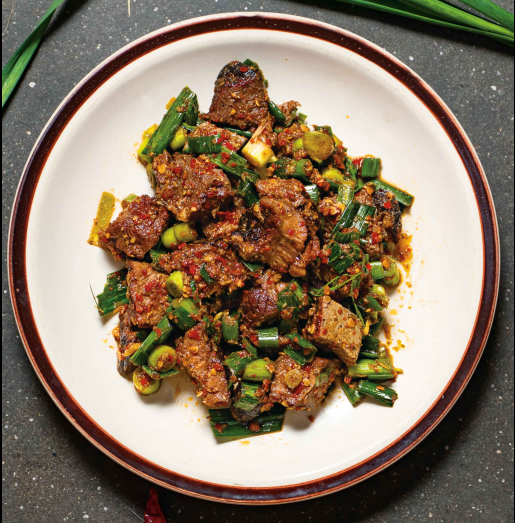A Newar get together follows every major Kathmandu festival, bringing together extended families for a gala time.
Every Nepali autumn, during and for the festivals of Dashain and Tihar, thousands of Nepalis leave Kathmandu valley to celebrate with their families. This is because besides Kathmandu’s native Newars, the capital’s burgeoning population comprises Nepalis from cities, towns and villages spread over the country’s mountains, hills and plains. Result: this temporary, seasonal migration, transforms Kathmandu into a different place. The chaos of Kathmandu’s traffic dies down significantly and delighted children descend on to the streets with their cricket bats, badminton rackets and footballs. What I know and most people don’t seem to is that there is a price to pay for this peace and quiet and that I pay this price. Because you see, the chaos doesn’t just vanish into thin air or seep down through the many cracks in the city’s roads. Alarmingly, it pulls off an amazing Houdini act from the streets to reappear magically in my home. Introducing the Nakhatya - the loud, crowded and chaotic Newar family get-together.
 In olden days and as is still the case, a Nakhatya would follow any major festival in the Kathmandu valley. Anyone familiar to the generous sprinkling of festivals on the Nepali calendar will agree that this makes up for many get-togethers. Take the chariot festival of Rato Matsyendranath as an example. During this festival, each community in the valley has its own chhwela bu, naika luigu, bhujya and yaka bhujya rituals when the chariot reaches their locality. The ‘bhujya’ ritual of the festival is celebrated after the ‘naika luigu’ ritual; the former marks the arrival of the chariot into their neighborhood and is celebrated with family gatherings and feasts. As the chariot makes its round, the get-togethers (read: feasts) follow.
In olden days and as is still the case, a Nakhatya would follow any major festival in the Kathmandu valley. Anyone familiar to the generous sprinkling of festivals on the Nepali calendar will agree that this makes up for many get-togethers. Take the chariot festival of Rato Matsyendranath as an example. During this festival, each community in the valley has its own chhwela bu, naika luigu, bhujya and yaka bhujya rituals when the chariot reaches their locality. The ‘bhujya’ ritual of the festival is celebrated after the ‘naika luigu’ ritual; the former marks the arrival of the chariot into their neighborhood and is celebrated with family gatherings and feasts. As the chariot makes its round, the get-togethers (read: feasts) follow.
Gai Jatra, Ghode Jatra, Indira Jatra, Bisket Jatra; the list goes on and on. The mother of all festivals and hence of all get-togethers is the Dashain Nakhatya. My modest bungalow for ten bulges at its sides, it’s pillars and walls creaking and sighing to accommodate about seventy relatives of all ages and distinct characteristics. As I struggle to remember the names of young children that I struggled to remember the names of the previous year, the older aunties and uncles struggle with my own. Preparations will have started days in advance for the feast. Newar feasts are popular for their lavishness and variety, with an array of succulent meat dishes, vegetable curries, spicy homemade pickles and sweets on offer. No Newar feast would be complete without a healthy dose of home brewed liquor or thhwon. As the level in the jerry can falls, the cacophony rises. The merriment to a passing stranger would probably sound like full on verbal sparring but loud voices and louder laughter seems to run in Newar bloodlines.
The noise and celebratory mood penetrate and permeate everything in its wake - the furniture, the curtains, the primer on the walls and even the people. Later, at the end of the night, (and the end of the festive season), there’s an empty ring in the air, from perforations left behind by the chaos, as it retraces its locus to find its way back into Kathmandu’s streets.











